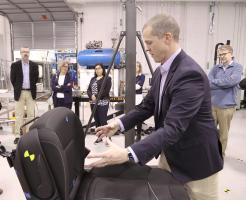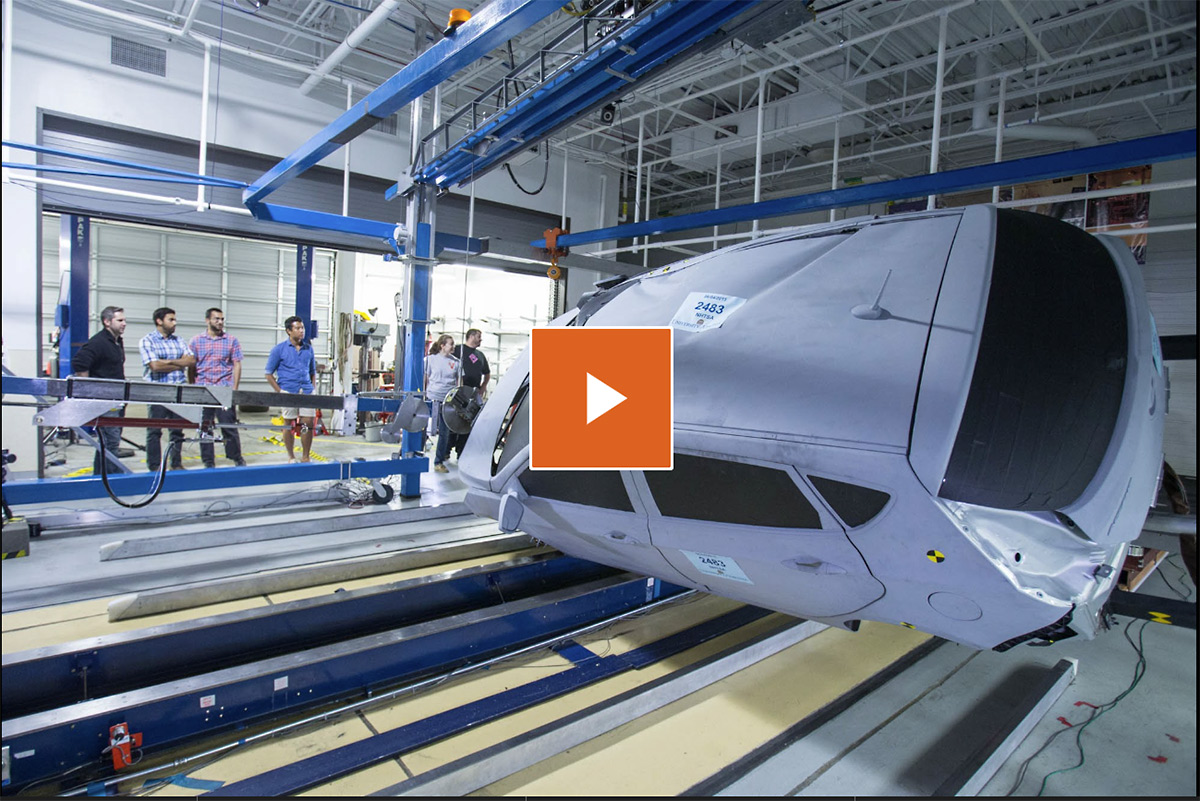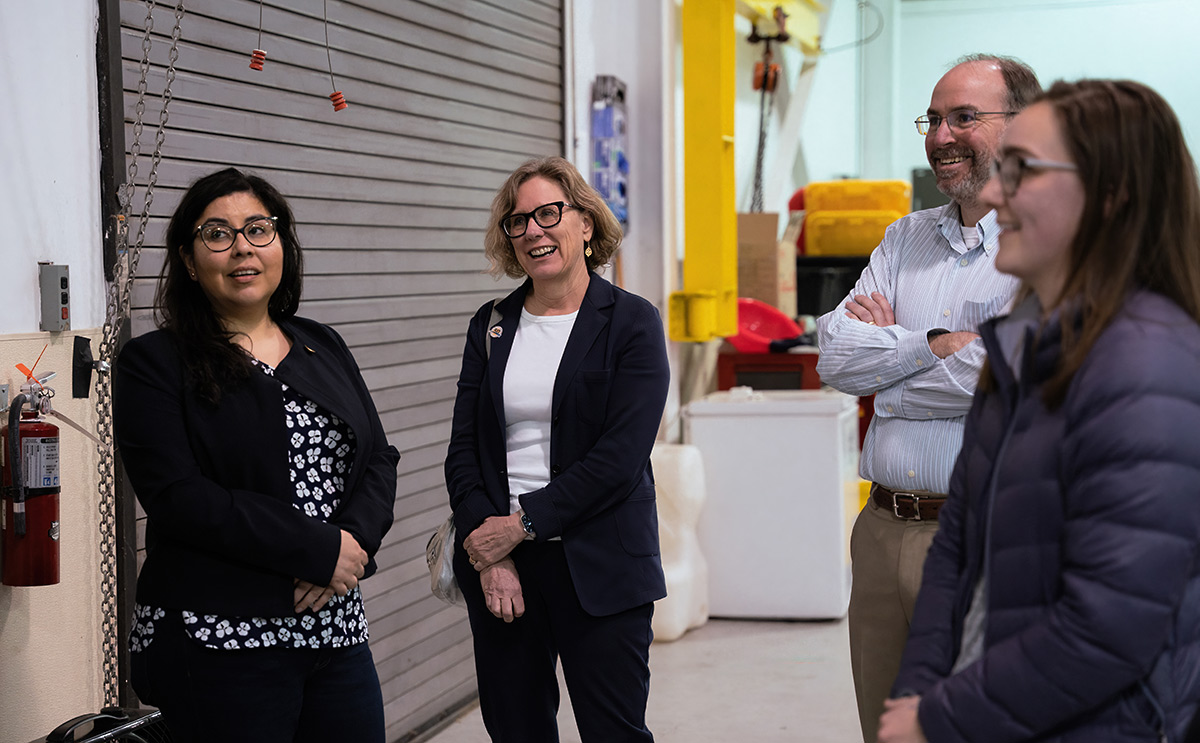
According to the U.S. Department of Transportation, roadway fatalities and the fatality rate declined consistently for 30 years, but progress has stalled over the last decade and receded in 2020 and 2021 during the pandemic. Between 2011 and 2020, there were more than 350,000 fatalities on U.S. roadways.
Fueled by the support outlined in the bipartisan infrastructure law, U.S. DOT created the National Roadway Safety Strategy (NRSS), a roadmap for continuing to reduce roadway deaths and injuries.
As part of this strategy, the U.S. DOT’s National Highway Traffic Safety Administration recently awarded the University of Virginia's Center for Applied Biomechanics eight competitive research contracts totaling $4.1 million, with optional follow-on tasks bringing the total to more than $11 million.
The contracts will further the center’s already impressive research in various areas crucial to automotive safety. The new studies will include measuring the variations in injury risk among different demographic groups, such as men and women. They will explore the impact of different riding positions, such as reclining or sitting upright, as well as the type of vehicle — for instance traveling in a bus or limousine — on overall safety. They will also devise strategies to mitigate pedestrian fatalities resulting from vehicle impacts.
“These topics are at the heart of NHTSA’s vehicle safety research agenda, and winning eight of the 12 they offered this year really shows how essential the CAB has become to the federal government’s efforts,” said Jason R. Kerrigan, director of the center and an associate professor of mechanical and aerospace engineering.
Leading the Evolution of Biomechanics in Vehicle Safety
For over three decades, UVA's Center for Applied Biomechanics has been a world leader in injury biomechanics and automobile safety research. Often, NHTSA translates the results of the center’s research into national safety policies for automobile manufacturing.
Center researchers help develop realistic life-sized models that try to accurately represent humans — what we know as crash test dummies — and use advanced research techniques such as biomechanical computer modeling and state-of-the-art facilities to evaluate the human body’s vulnerabilities in car accidents. One notable type of test equipment is called a “sled.” The center has two sleds. With some clever engineering, they can physically simulate myriad controlled crash types, including a full SUV rollover and pedestrian impacts using dummies.

Working with important partners NHTSA, national vehicle testing programs, car and safety system manufacturers, global governments and fellow research institutions, the center’s researchers have played a substantive role in keeping people safe in car crashes.
“Our field has done a great job in making cars safer through advanced seatbelts, airbags, vehicle designs and collision avoidance technologies,” said Jason Forman, associate research professor and lead researcher on several contracts.
“Cars are much safer than they used to be, but we still have work to do. It’s very encouraging that the government is continuing to invest in fundamental research to keep building on the momentum of the past 50 years of automotive safety research.”

Tailored Studies to Gain Deeper Insights for Women and Others
The center specializes in understanding how different demographics affect the risk of injury. In 2019, the center published a seminal study that showed belted female auto occupants have 73% greater odds of being seriously injured in frontal car crashes compared to belted males in the Journal of Traffic Injury Prevention. The study highlighted the need for continuing research around “person-to-person variability,” a term used in the field to explain that the “one size fits all” approach may not be appropriate for some safety measures.
The center’s new U.S. DOT contracts include a significant investment in studying how automobile restraints interact with different body types, including studying the differences in injury risk between females and males, young and old, and obese and non-obese occupants. This will be the largest injury biomechanics study on person-to-person variability ever performed, and the data will be used in vehicle design and to help shape automotive safety policy.

Examining Safety Implications of Reclined Seating in Vehicles
A different research project will support the study of alternative seating as seen in limousines, or what might be offered in future self-driving cars. Such vehicles offer varied seating configurations that can bring luxury and comfort to occupants, but more research is needed to improve safety. Researchers seek to eliminate roadway tragedies like the limousine crash that killed 20 in 2018. They will use a combination of experiments and simulations to explore injury risks, improve injury prediction tools and develop sufficient safety systems for alternative seating.
Addressing Pedestrian Fatalities
A third study will use new U.S. DOT pedestrian crash data with experiments and simulations to explore how vehicle shape impacts pedestrian safety. While other roadway fatalities have decreased overall, pedestrian fatalities from vehicle accidents have increased by more than 50% since 2008. Among other reasons, center researchers have hypothesized that the increase could be related to greater numbers of SUVs, trucks and other high-hood vehicles on U.S. roadways. The study will focus specifically on concerns related to trucks and SUVs and will likely impact U.S. pedestrian safety policy.
Paving the Way Forward: Advanced Dummies and Human Models
The remaining contracts will focus on continuing to assist the U.S. DOT in the development and evaluation of advanced crash test dummies and computer models of the human body.
For instance, NHTSA recently proposed use of an advanced crash test dummy called THOR (Test Device for Human Occupant Restraint) in standardized crash testing in the U.S., and the center’s research was a cited throughout NHTSA’S description of how THOR can and will be used to predict injury.
Together, these sophisticated physical and computer testing resources will form a toolbox for NHTSA, car companies and others to continue to improve automobile safety for all people for generations to come.